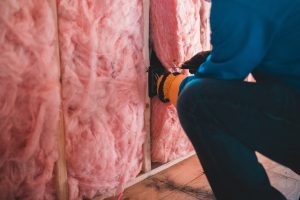
You can lower your energy bills by installing extra insulation in your home. Many older homes are usually less insulated than newer homes, but adding insulation can help pay for itself in a matter of years.
To decide if you should add insulation, you first need to determine how much and where you currently have insulation. A home inspector, also known as a home energy audit, can help you find the sections of your home that need to be air sealed.
If you don’t want an energy evaluation, you should investigate the following:
- Where is your home sufficiently insulated and where it is not?
- What kind of insulation do you currently have?
- What is the R-value of your insulation, as well as its thickness or depth?
Assess and Inspect Your Insulation.
Inspect the attic, walls, and flooring as well as any unheated area, such as a garage or basement. In these locations, the structural elements are frequently exposed, making it simple to see what type of insulation you have.
Using an electrical outlet, inspect the exterior walls:
- Turn off the power to your house and remove the plug from your outlets.
- Shine a flashlight into the outlet box’s crack. You should be able to see if the wall has any insulation and, if so, how thick it is.
- If necessary, remove a tiny amount of insulation to help assist in determining the type of insulation you have.
- Examine the outlets on all levels of your home, as well as the old and new additions. Just because insulation is found in one wall doesn’t guarantee it’s there throughout the house.
Note:
Examine and measure the insulation thickness in unfinished basement ceilings and walls, as well as above crawlspaces. If the crawlspace isn’t vented, the perimeter wall maybe. It’s possible that your house has insulation outside the basement or foundation walls if it’s new. If this is the case, the insulation in these areas will not be visible and the builder or the original homeowner may be able to tell you.
After you’ve determined the type of insulation you have in your house, visit the US Department of Energy’s online insulation information page to find out the R-value of your home insulation. An R-value is the temperature difference per unit of heat flux required to maintain one unit of heat flux between the warmer and cooler surfaces of a barrier.
Calculating, Assessing, and Return on Investment
When you know the R-value you can use a Home Energy Saver calculator to figure out how much you’ll need to add and where to get the best results. It also offers recommendations for energy enhancements, such as insulation, as well as their expected return on investment.
